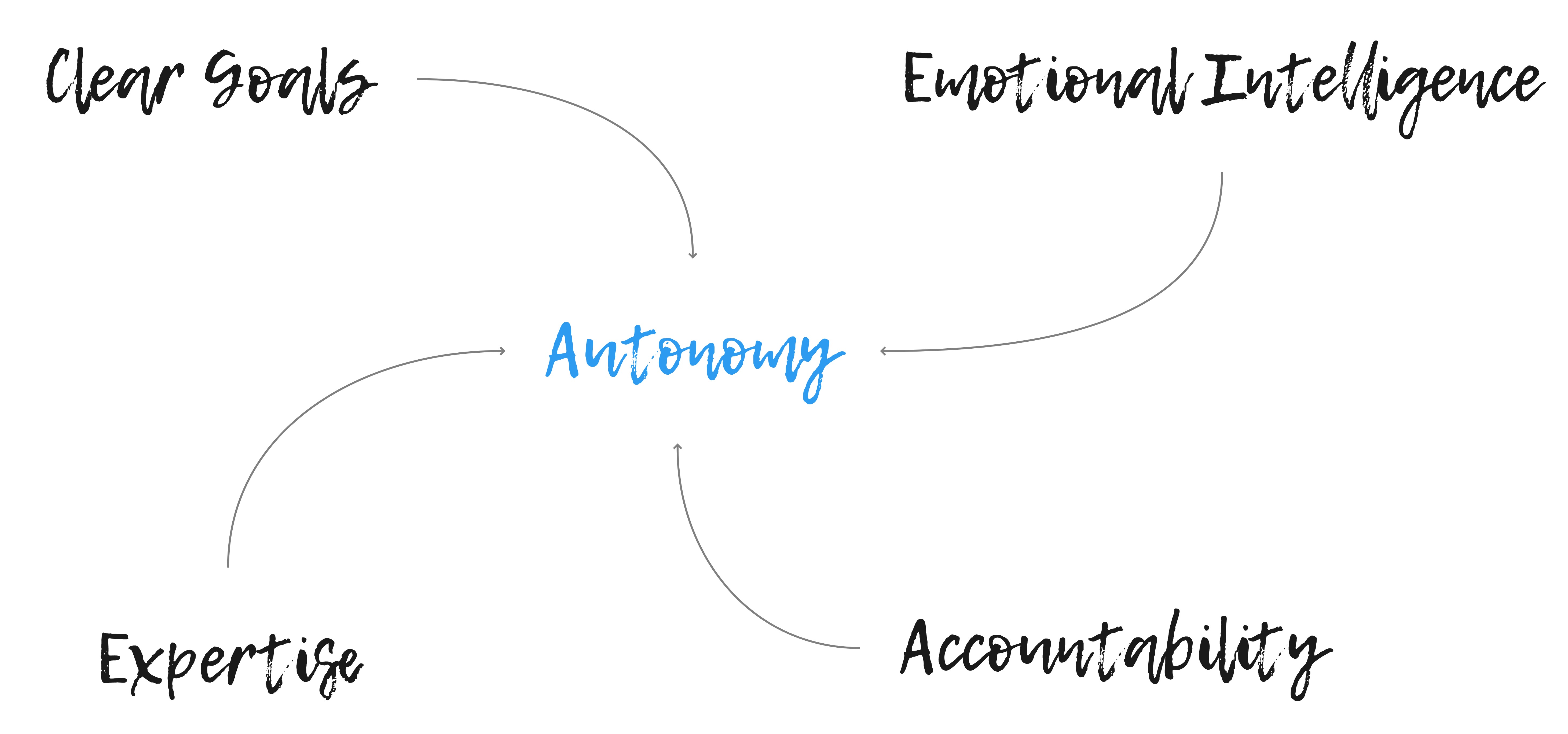Within the software industry, there’s the consensus that cross-functional and autonomous teams are the best way to achieve innovation and outstanding results. Take a group of talented individuals from all the required disciplines, put them together and empower them to achieve great results.
Sounds easy, no? Autonomy is an innate concept for humans, and the principle of deciding your direction resonates well with our personal experience. Yet embracing autonomy is not an easy task.

Firstly, there’s often a misinterpretation of the actual meaning of autonomy. Autonomy is not a free pass for autarchy. Having team autonomy means having the mandate to proactively explore problems, identify and recommend solutions while collaborating with all the relevant parts of the organisation to achieve the best outcomes. With autonomy, the team has a seat at the table for making decisions. Still, it’s not the sole decision-maker. They are part of a broader context, contributing to the company’s mission and business goals.
Furthermore, there are both system and team level requirements for truly thrive with autonomy.
At system-level, the organisation should be comfortable about releasing control and work with goals and feedback loops. In other words, the organisation has to shape the team’s purpose. That’s quite a radical shift in mindset. Leaders must define clear goals and stay away from details while maintaining the necessary know-how to jump in when necessary. They need to orchestrate success instead of using people and teams as an extension of their work and facilitate information flow for distributed decision making. These traits are hard to develop and often even harder to nurture and retain at scale.
Deming taught us that:
A bad system will beat a good person every time
It’s easy to think that the environment solely influences the path to high performance. In my experience, it’s not like that. Self-governing teams also need to incorporate specific traits. The most effective autonomous teams consistently demonstrate these three distinct characteristics:
- Strong sense of accountability
- High emotional intelligence
- Deep and overlapping expertise
Autonomy and accountability
There’s no autonomy without accountability. Teams should have a drive towards their objectives and be able to overcome unexpected challenges. The team needs to not only own it in principle but in practice. How to overcome a challenge to achieve our goals? What is required?
High Emotional Intelligence is the glue of autonomous teams
Disagreements and setbacks happen with every team. Great teams have a strong collective EQ to clarify conflicts and get back on the right track independently. High EQ also drives what I call “high-density conversations”. It’s not the number of meeting or catch-ups that will drive results, but the quality of what is discussed and shared in every single communication. Teams with low-density conversations tend to delay the most critical topics in favour of the less contentious ones.
Expertise is the booster of autonomy
High autonomy means being confident and competent in making complex decisions, and handling events end to end. Without the relevant skill and experience, teams will go in a circle rather than taking the right decisions and move forward. When there’s a gap, guidance from the people surrounding teams is critical. That support is, by all means, a contribution to the team’s purpose, not as an invasion of autonomy. On top of that, a degree of overlap of skills helps to have effective handover and decision making.
Either external or internal behaviours can trigger a shift towards high autonomy. If the organisation is leading with purpose, the team has a safe space to mature as it accepts additional support and shares the decision process. In scenarios where teams are mature and lead the change, they have a unique opportunity to built trust by consistently achieving and leading the change with discrete examples.
Indeed, teams and organisation cannot achieve autonomy by flicking a switch. It’s a shift that requires continuous nurturing. The autonomy level will most likely change in shape over time, based on the context and the maturity of all the actors involved.